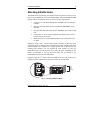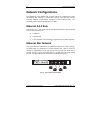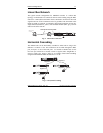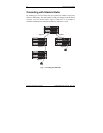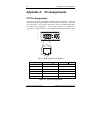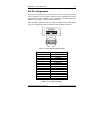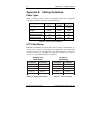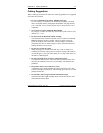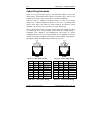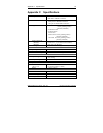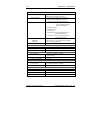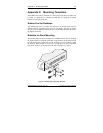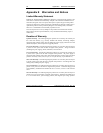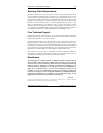
Appendix B Cabling Guidelines 17
KNE24TP/RS User’s Guide - Rev. A01 Kingston Technology Company
Cabling Suggestions
When connecting UTP network cables, the following guidelines are suggested
for trouble-free operation.
• Use CAT 5 Equipment for Future 100Mbps Networks
For true Category 5 compliance, all components including: UTP trunk
cables, UTP patch cables, patch panels and modular wall plugs must be
CAT 5 certified. A CAT 5 cable certifier may be used to ensure CAT 5
compliance.
• Never Exceed a Cable’s Minimum Bend Radius
For Category 5 cables, the cable may not be bent beyond 5 times its own
diameter (i.e., 1.25”).
• Do Not Exceed the Maximum Tensile Loading
The maximum tensile load is the amount of stress a cable can withstand
before performance begins to decline. This level usually occurs far
before the breaking point of the cable. Tensile loading is measured in
pound-foot (lbf). For 24 AWG Category 5 cables, the maximum tensile
loading should not exceed 25 lbf.
• Do Not Over-Cinch the Cables
When grouping a set of cables with cable ties, cords, or staples, over-
cinching can cause the cable jackets to compress causing a deterioration
of cable integrity. Use proper cable clamps or “D” rings which allow for
the cable’s width and girth.
• Do Not Untwist the Pairs on CAT 5 Cables Beyond 0.5”
Care should be taken to never untwist the pairs beyond 0.5 inches from
the point of termination. This rule is in accordance with TIA/EIA-568
guidelines.
• Keep UTP Cables Away From Power Lines
A minimum of five inches should be kept from electrical fixtures, such
as fluorescent lights, transformers, and other high power devices to avoid
possible interference.
• Do Not Run Cables Longer Than The Maximum Length
The maximum cable lengths includes all patch cords from node to wall
plug and patch panel to hubs.



